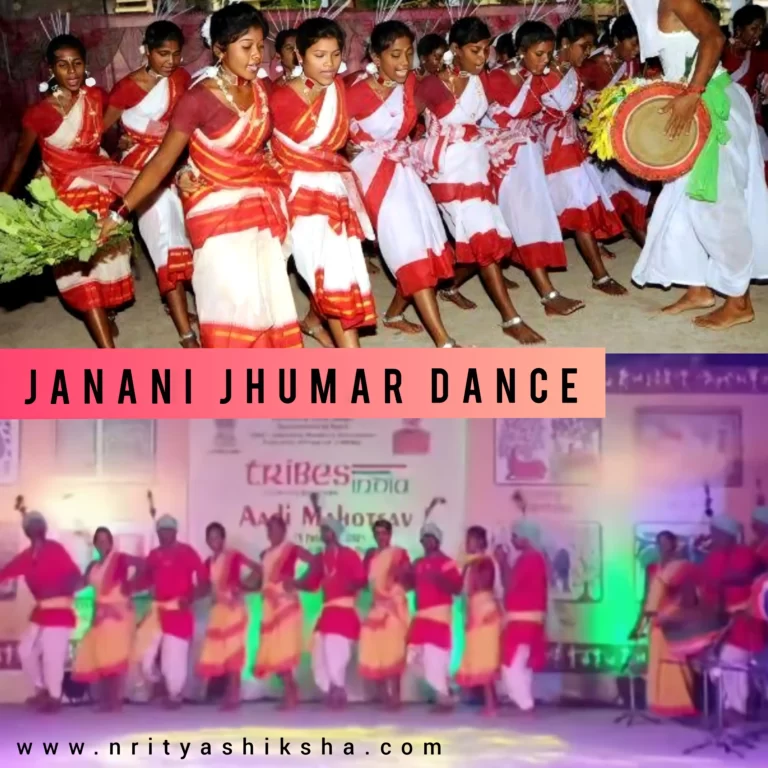Jhumar Dance of Haryana: A Vibrant Cultural Tradition
Jhumar Dance of Haryana
Jhumar is a traditional folk dance of Haryana, a northern state of India. It is a lively and energetic dance form that is performed during festive occasions, social gatherings, and celebrations. Jhumar is predominantly performed by men, although women also participate in some variations of the dance.
Haryana, a vibrant state in northern India, is renowned for its rich cultural heritage. Among the many traditional dance forms that grace the land, Jhumar stands out as a captivating and lively folk dance. With its energetic movements, rhythmic beats, and vibrant costumes, Jhumar embodies the spirit and essence of Haryana. In this blog, we will delve into the enchanting world of Jhumar dance, exploring its history, significance, and captivating elements.
History and Origin of Jhumar Dance
Jhumar dance finds its roots in the Jat community of Haryana. The word “Jhumar” itself means “swaying” or “moving with joy.” Historically, it was performed by men during various celebratory occasions like weddings, harvest festivals, and other joyful events. Over time, the dance form has evolved and is now also performed by women, making it a versatile and inclusive art form. Jhumar has its roots in the Jat community of Haryana and is believed to have originated in the early 20th century. It was initially performed by the Jat farmers to celebrate the harvest season and express joy and happiness.
Instruments Used In Jhumar Dance
The dance is accompanied by vibrant and rhythmic music, which is usually sung live by the performers themselves. The musical instruments used in Jhumar include dholak (a double-headed drum), manjeera (small cymbals), harmonium (a keyboard instrument), and algoza (a double-flute instrument).
Costumes and Attire
The dancers wear colorful traditional attire that reflects the rural culture of Haryana. Men typically wear turbans (pagri), kurtas (long shirts), dhotis (loose pants), and churidars (tight-fitting pants), along with a waistcoat (bandi). Women, when they participate, wear brightly colored ghagras (long skirts) and cholis (blouses) with a dupatta (a long scarf).
Dance Movements and Choreography
Jhumar is characterized by vigorous and rhythmic movements that are performed in groups. The dancers form a circle or a semi-circle and move in coordinated steps, clapping their hands and tapping their feet to the beats of the music. The dance involves a lot of acrobatic movements like leaps, jumps, and twirls, which add to its energetic nature.
Themes and Expression
Jhumar depicts various themes of rural life and nature, including farming, animal husbandry, love, and social harmony. The dancers express their joy and exuberance through their lively movements, gestures, and facial expressions.
Popularity and Significance
Jhumar is a popular folk dance of Haryana and is performed in various cultural events, competitions, and social gatherings. It holds significant cultural importance as it reflects the rich heritage and traditions of the state, and is passed down through generations as a cherished art form.
Conclusion
In conclusion, Jhumar is a traditional folk dance of Haryana that is known for its vibrant music, colorful costumes, energetic movements, and depiction of rural life. It is a cherished cultural art form that reflects the joy, exuberance, and cultural heritage of the people of Haryana.
FAQS :
Q: What is Jhumar Dance of Haryana?
A: Jhumar Dance is a traditional folk dance form that originated in the state of Haryana, India. It is performed with great enthusiasm and vigor during various festive occasions and celebrations.
Q: What are the key features of Jhumar Dance?
A: Jhumar Dance is characterized by its energetic and graceful movements, performed in a circular pattern. The dancers, both men and women, form a circle and move in sync with the music and rhythm. The dance involves intricate footwork, hand gestures, and expressions that portray the rich cultural heritage of Haryana.
Q: What is the significance of Jhumar Dance?
A: Jhumar Dance holds immense cultural significance in Haryana. It is not only a form of entertainment but also a way to preserve and showcase the traditions and customs of the region. The dance reflects the joy, enthusiasm, and unity of the Haryanvi people.
Q: What kind of music accompanies Jhumar Dance?
A: Jhumar Dance is performed to the melodious tunes of traditional Haryanvi folk music. The music is usually accompanied by instruments such as dholak (drum), harmonium, flute, and sometimes the sarangi (stringed instrument). The rhythmic beats and lively melodies enhance the overall performance of the dance.
Q: Are there any specific costumes worn during Jhumar Dance?
A: Yes, Jhumar Dance has its distinct costumes that add to the visual appeal of the performance. Men typically wear kurta (loose shirt), dhoti (traditional garment), and a colorful turban, while women adorn themselves in vibrant ghagras (long skirts), cholis (blouses), and odhnis (scarves). The attire is often embellished with intricate embroidery and mirror work.
Q: Can anyone learn and perform Jhumar folk Dance?
A: Yes, Jhumar Dance can be learned and performed by anyone who has a passion for Haryanvi folk culture. It is not limited to a particular age group or gender. Many dance schools and cultural centers offer training in Jhumar Dance, allowing individuals to learn the art form and participate in cultural events.
Q: Where can one witness Jhumar Dance performances in Haryana?
A: Jhumar Dance performances can be witnessed during various festive occasions, weddings, and cultural festivals in Haryana. Additionally, several cultural events, fairs, and competitions organized by the state government or local communities often showcase Jhumar Dance as a prominent part of the cultural program.




